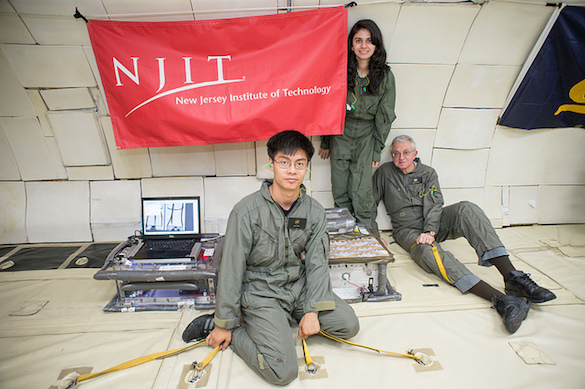Parabolic Flight: Validation of Electro-Hydrodynamic Gas-Liquid Phase Separation in Microgravity
PI: Boris Khusid, New Jersey Institute of Technology
PI: Boris Khusid, New Jersey Institute of Technology

- TA14 Thermal Management Systems
The main idea behind our method is to apply an electric force directly to a fluid via capacitive coupling to external electrodes in order to eliminate the adverse effects of electro-chemical reactions at the fluid-electrode interface. The EHD method can induce a gas-liquid phase separation even in a microliter-sized volume of bubble dispersions, requires no moving parts and offers easy adaptability to electronics. However, it remains unclear the extent to which neutrally buoyant particles subjected to an electric field can mimic the field driven behavior of bubble dispersions in microgravity. The parabolic flight tests are therefore required to provide the ultimate proof-of-concept for the EHD gas-liquid separation in microgravity and elucidate the salient effects of the buoyancy force.
The current level of the EHD technology is TRL 3/4. Parabolic flight tests should provide the ultimate proof-of-concept for the EHD method of the bubble concentration and removal in a microgravity environment. The TRL can be raised to 6/7 and above within 3-4 years after flight tests.
If successful, flight tests should validate the EHD method and provide critical data for the development of EHD devices to control, manipulate, and separate bubbles in a wide range of space technologies.
We plan to assemble the EHD system in flight-test configuration and carry out flight tests on four fluids with different properties in a weeklong campaign with 4 flights and vary an applied voltage and a bubble size from one parabola to another in a flight. Our estimates indicate that 15-20 seconds of zero gravity would be sufficient to test theoretical predictions for the bubble segregation and removal. Basic system fluidic and electric components will represent a miniaturized version of our unit for experiments on the suspension electro-hydrodynamics flown in 2003.

Technology Details
-
Selection DateAFO3 (Mar 2012)
-
Program StatusCompleted
- 1 Parabolic
Development Team
-
PIBoris Khusid
-
Organization
-
SponsorNew Jersey Institute Of Technology
-
More Information

